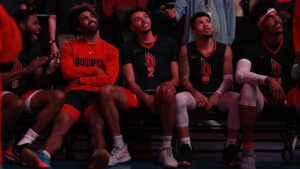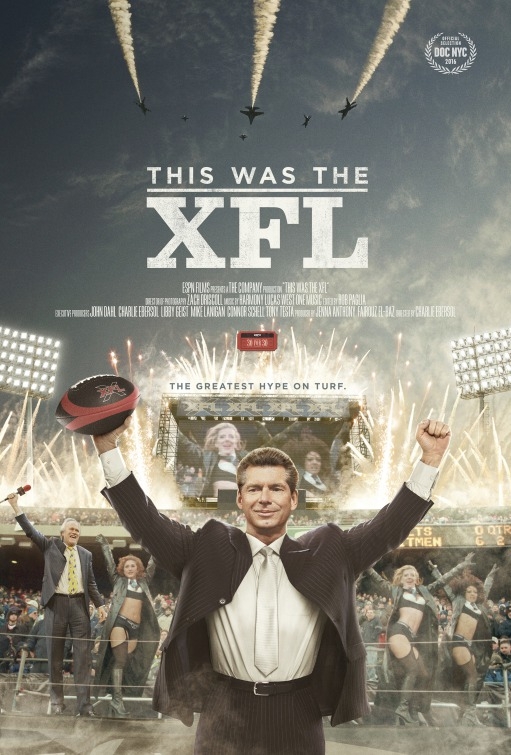
Adam Lindner | Staff Writer
Nov. 14, 2019
During the 2016-17 college basketball season — my freshman year at Duquesne — the men’s basketball program was in shambles, save for the play of talented freshmen Mike Lewis II and Isiaha Mike.
The Dukes would begin that season with an exhibition loss to Division II opponent Mansfield and finish with a 10-22 record, paired with a 3-15 mark in the Atlantic 10.
Miraculously, DU managed to beat Pitt in the City Game for the first time in 16 seasons that year, but would fall to Robert Morris four days later. Other dreadful losses included both Tennessee-Martin and UMBC at home, plus Rhode Island (by 21 at home), Dayton (by 37) and last-place Fordham (by 18 at home).
After a Jan. 11 win against Saint Louis, the team would win one more game; a Feb. 15 victory against UMass saved the Dukes from what would have been an 0-15 finish to the season.
Mercifully, it would also prove to be Jim Ferry’s 60th and final victory as Duquesne’s head coach, ending a tenure at the school that lasted five seasons.
The search for his successor, though, turned out to be an arduous — and embarrassing — process. It lasted for weeks on end, with several candidates taking their names out of the running for the position. Comically, even former Ohio State walk-on and media personality Mark Titus eventually began openly campaigning for the position online.
But finally, in the end, Duquesne got it right by snatching Keith Dambrot away from a solidly-built program at Akron. The hire raised eyebrows, pleasantly surprised Duquesne fans and gave the program a new lease on life.
Fast forward about 32 months into the future, and Dambrot has completely altered the complexion of the men’s program. He inherited a 10-win team and guided it to 16 in the ensuing season, then to 19 last year.
In addition to a superior on-court product, the school traded in its Adidas gear for Nike in 2017, then instituted new logos and fonts this year. What’s currently left of the A.J. Palumbo Center is being demolished to make way for the UPMC Chuck Cooper Fieldhouse, set to open in time for the 2020-21 season.
Frankly, there are very few parallels, if any, to be drawn between the 2016-17 Dukes and the state that the program finds itself in today. Shoot, the only player from the 2016-17 season still rostered is walk-on Caleb Davis. Nothing feels the same.
Dambrot has ushered in a new era of Duquesne basketball — one in which fans hope to see the team return to its first NCAA Tournament since 1977.
In Year Three of his time on The Bluff, the Dukes certainly have the pieces necessary to continue building toward that elusive tourney appearance.
Whether or not Duquesne’s dreams become reality depends on several key factors, both immediately and down-the-road.
Here are three things that need to happen if Dambrot’s to lead the Dukes back to the tourney in the near future.
Team stays healthy, especially Sincere Carry
This November, this March, next January, whatever — if Duquesne plans on sustaining the success that it’s had thus far under Dambrot and ending its tournament drought at any point in the foreseeable future, the team needs to remain in top shape. Especially Sin Carry.
The sophomore guard’s knees troubled him during his freshman campaign last year, causing him to miss several contests and forcing him to play through pain in others.
Over the course of the past few months, Carry has said at numerous points that he’s 100% healthy and playing pain-free. Carry’s health is a top priority for Duquesne, and is something that can’t be compromised if the team is to succeed.
The sophomore — named to the Atlantic 10’s Preseason Third Team — is simply too vital to the team’s success.
Maceo Austin ends up being what he appears to be
Dambrot has managed to find one recruiting gem for each year he’s been at DU, beginning with the under-recruited Eric Williams Jr. in 2017.
Then, it was Carry — a former D-II commit — who impressed everybody during his freshman season in 2018, leading the country’s freshmen in steals with a 2.43 average.
Neither Williams Jr., who transferred to Oregon this past offseason, nor Carry looked like freshmen during their respective first seasons at the collegiate level.
This year, Duquesne’s star frosh seems to have come in the form of consensus three-star guard Maceo Austin.
Austin, who picked the Dukes over a bevy of high-major schools, was Dambrot’s first high-level recruiting victory at DU. Additionally, he seems to be one of the team’s best players only two games into his career.
The 6-foot-5 shooting guard hit back-to-back corner 3’s to kickoff a monstrous second-half DU run against Princeton in the season opener, and then scored 15 points against Lamar on Nov. 12 on 6-for-12 shooting.
For most of the game’s first half against Lamar, Austin was the Dukes’ only bright spot. Presumably, the talented freshman is just getting started — at least, those around him seem to think so.
“There’s one thing I’ll tell you about Maceo Austin,” junior center Mike Hughes said following DU’s 66-56 win over Lamar. “Sleep if you want. That’s all I’m going to say. … Just wait.”
Dambrot offered even higher praise after the win.
“I’m probably one of the biggest Maceo fans of anybody in the world,” Dambrot said. “I love everything about him. I like him as a kid. I like his temperament. I like his ability.
“He’s not even there yet,” Dambrot continued. “He’s still got to get stronger, learn the college game, but he’s a big-time winner. There’s not one thing I don’t like about him.”
Nobody significant transfers out of the program
The Williams Jr. transfer will hurt the Dukes, but probably not as much as some thought it would prior to the season.
Austin appears equipped to replace Williams’ production on the wing, and Lamar Norman Jr. should see increased playing time as a result of Williams’ departure, as well.
If Frankie Hughes wasn’t sidelined for a torn meniscus this season, the team would be fully equipped to make up for lost production on the wing.
This offseason, however, will be vital in determining how the team projects to move forward after this season.
Namely, four players are redshirt juniors this year — Tavian Dunn-Martin, Mike Hughes, Frankie Hughes and Marcus Weathers — meaning they would be free to play elsewhere next season without sitting out at all.
The damage that transfers can have on mid-major programs is well-documented, and if DU is to reach the next level in its current ascent, it’s going to have to make sure that Williams Jr. is its last major loss to the transfer market.




